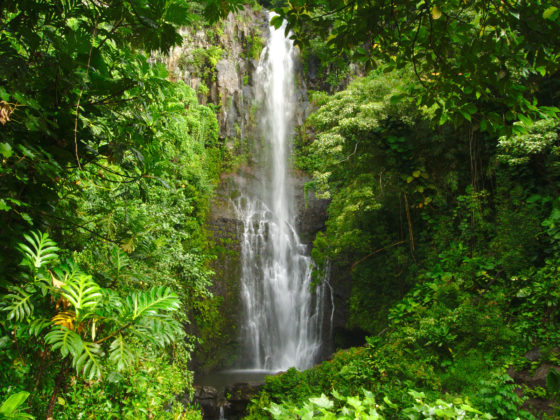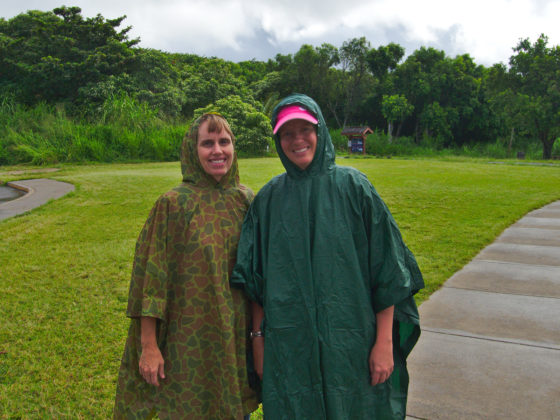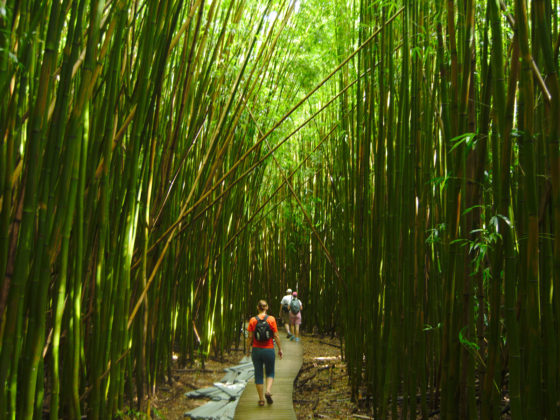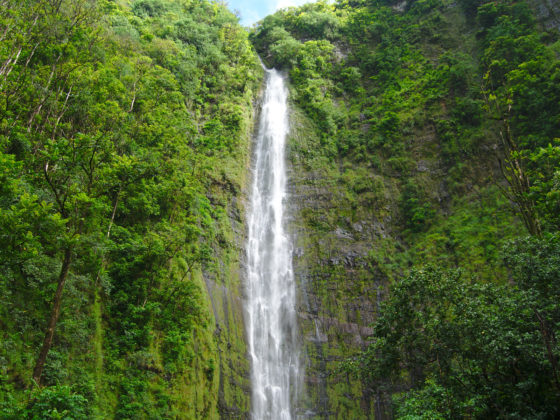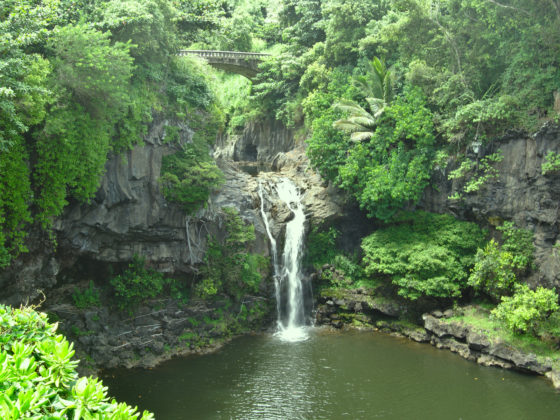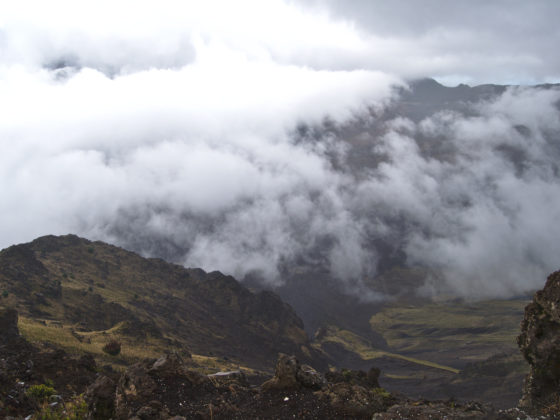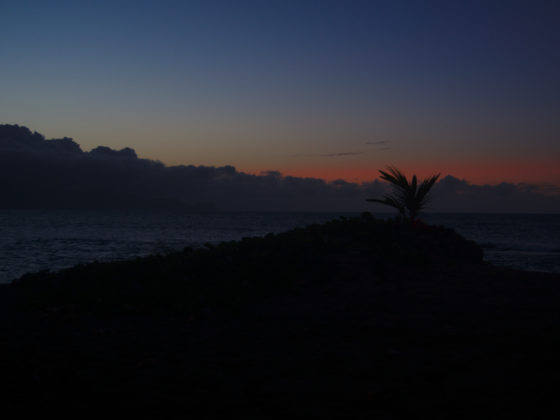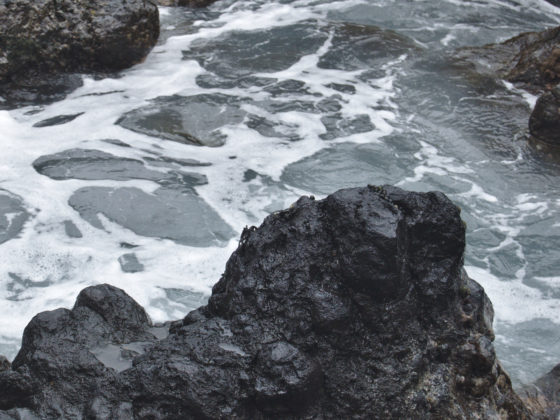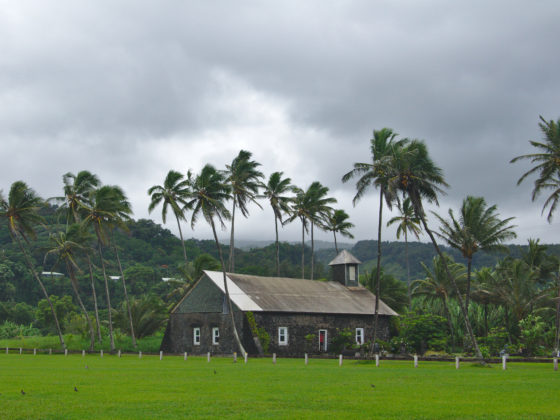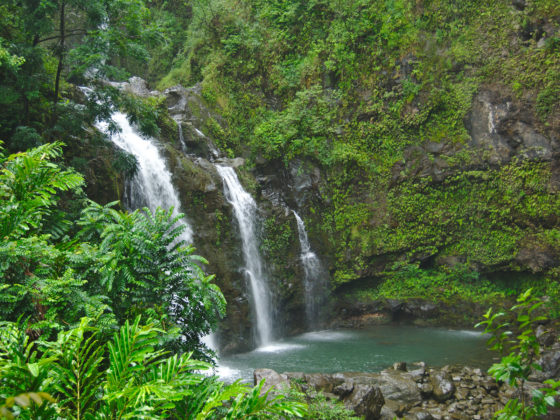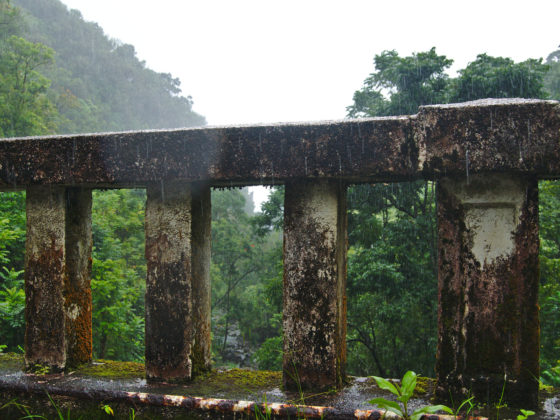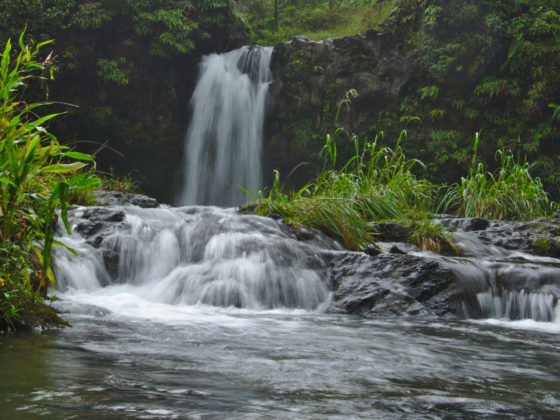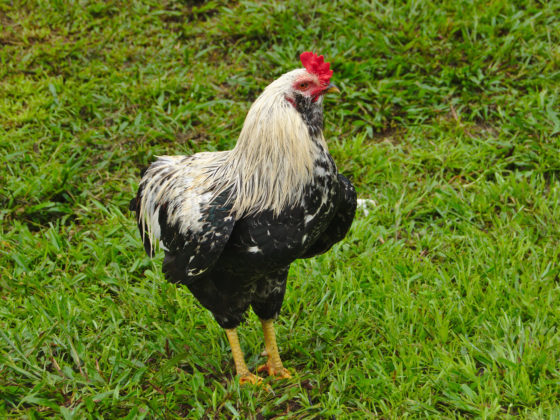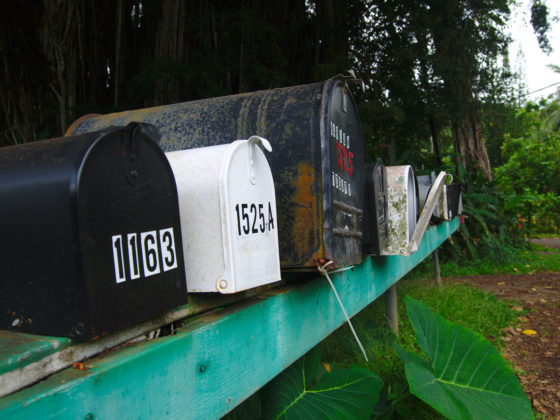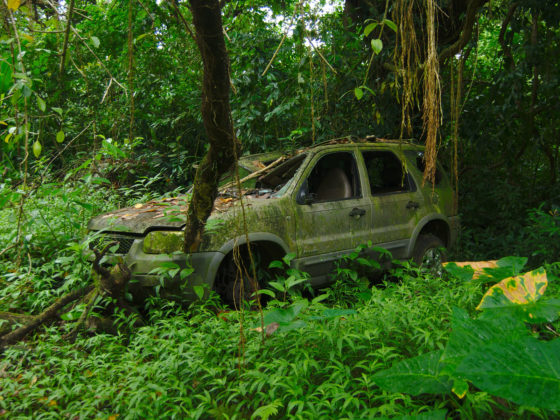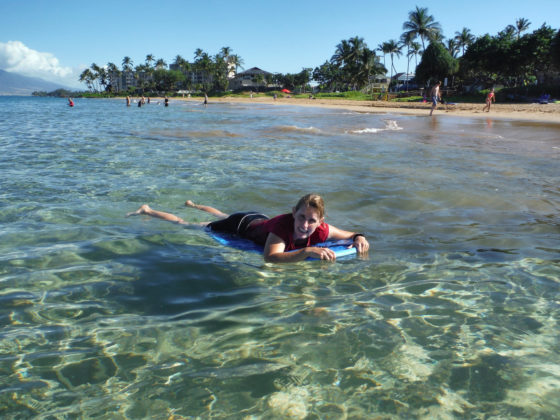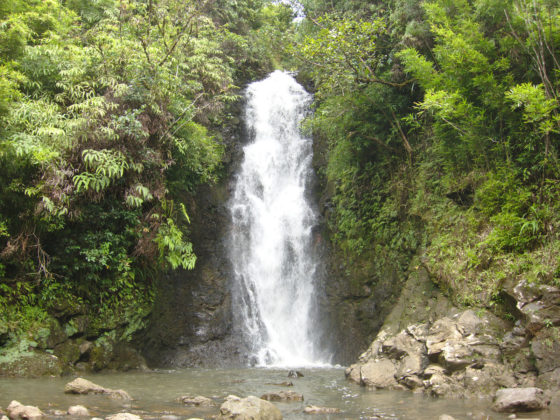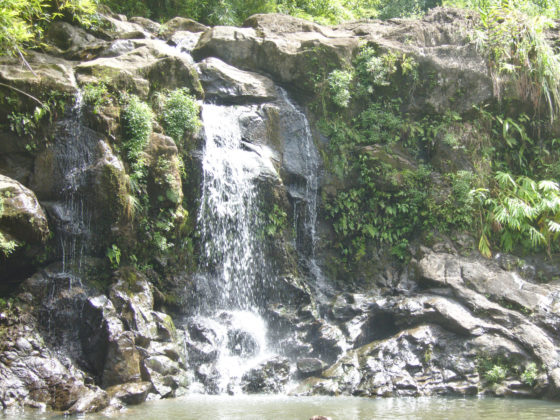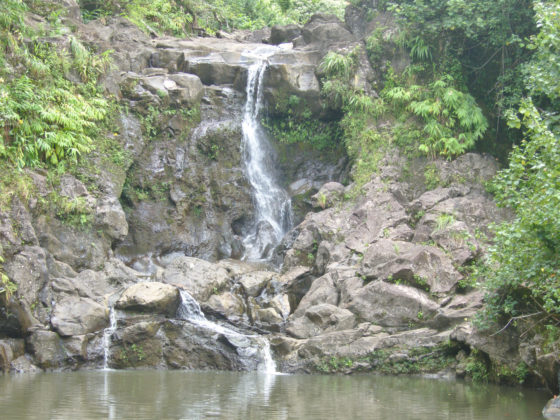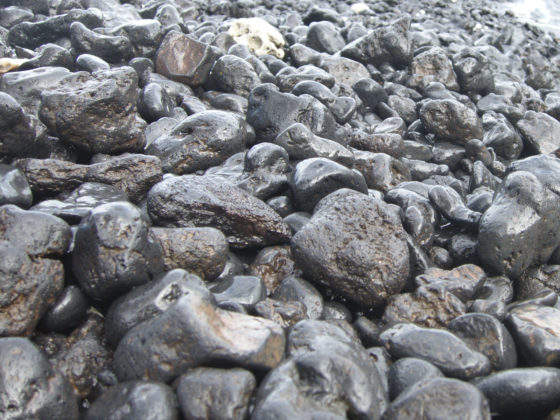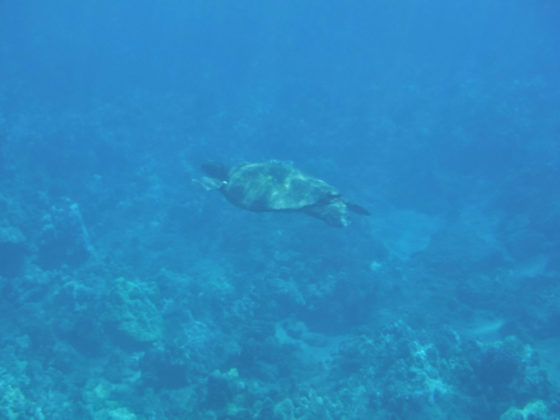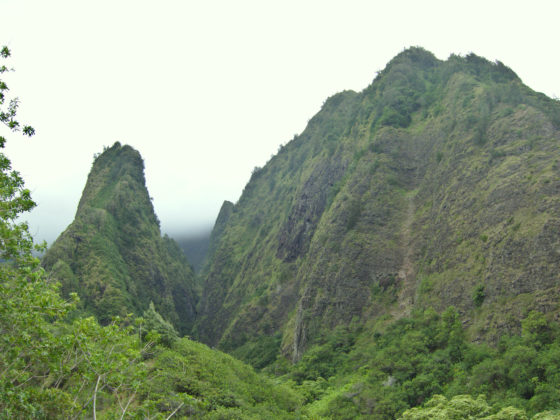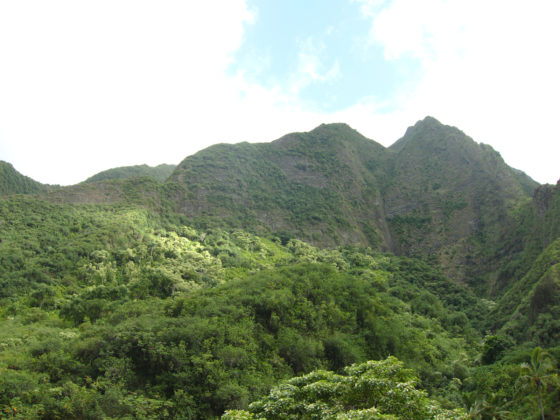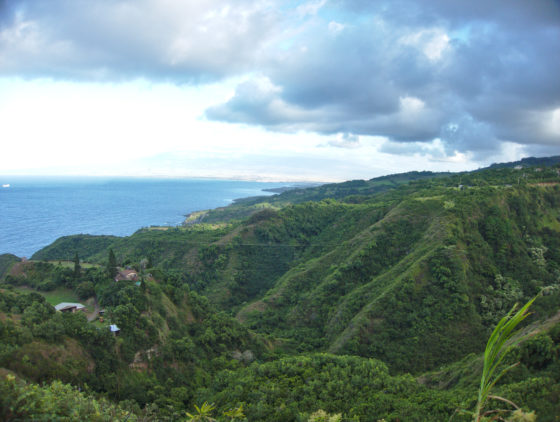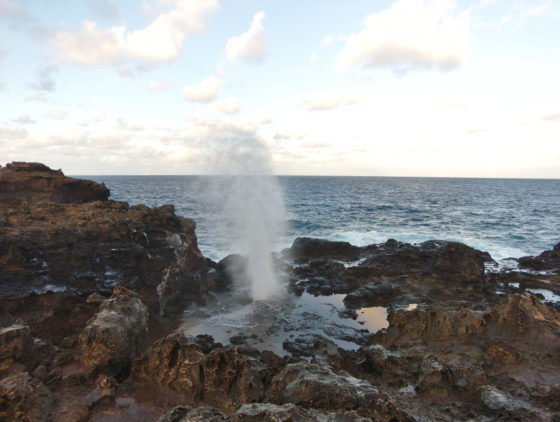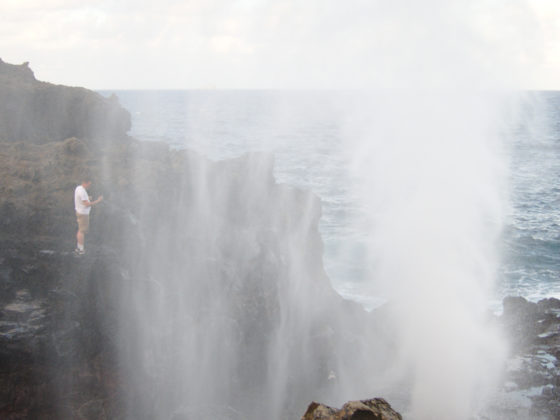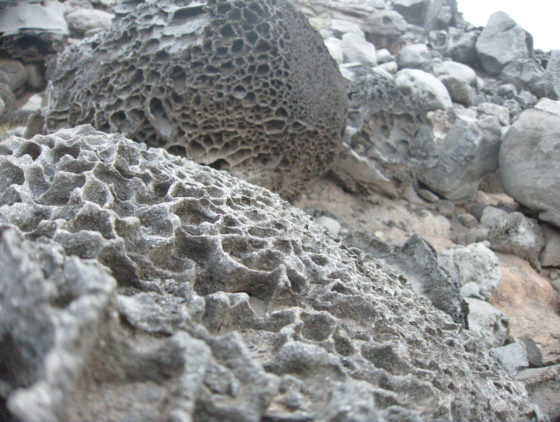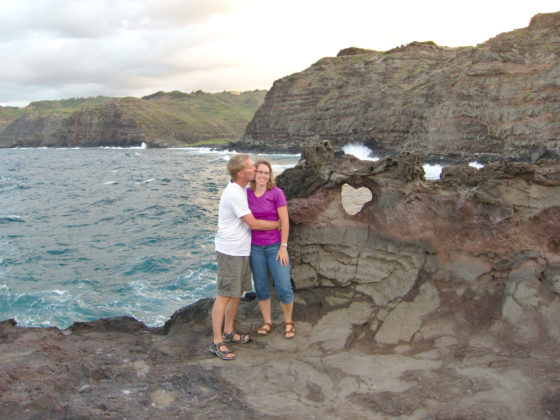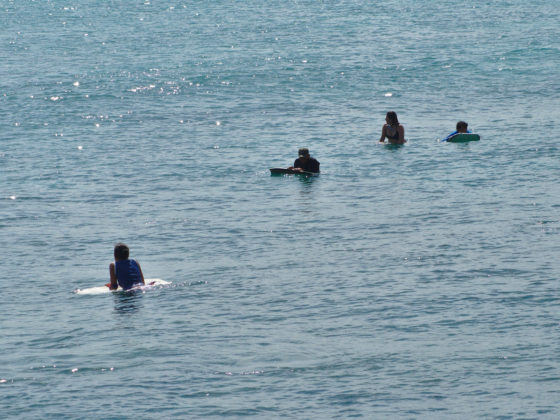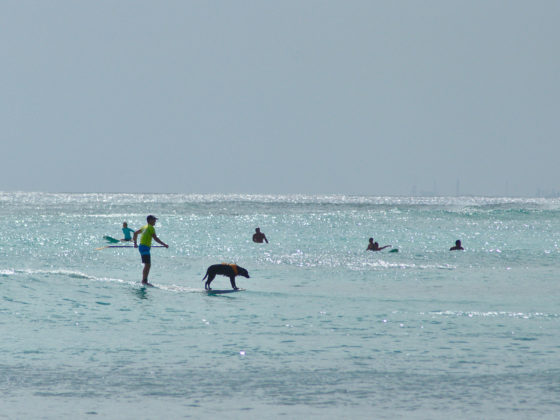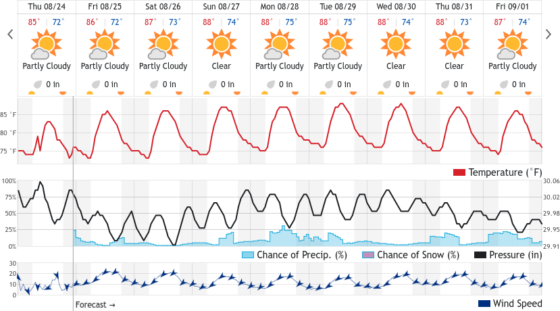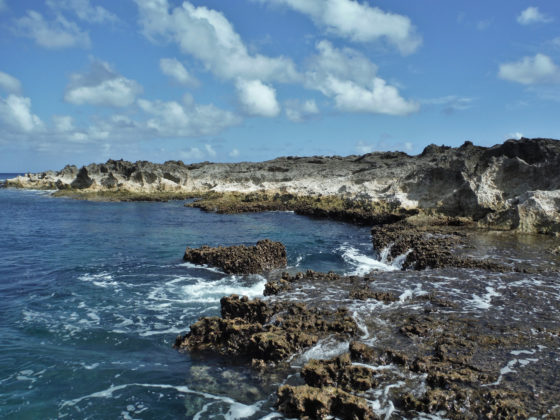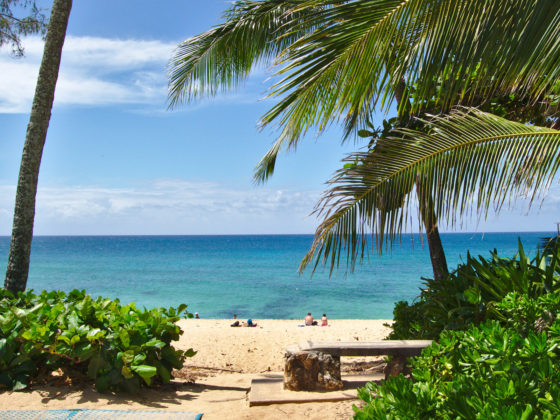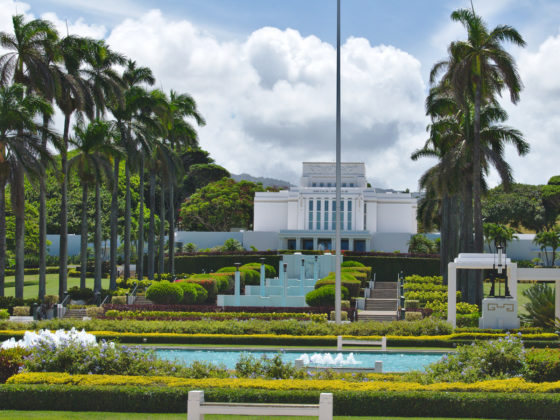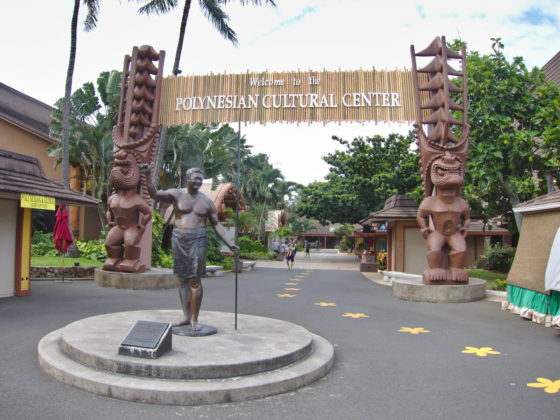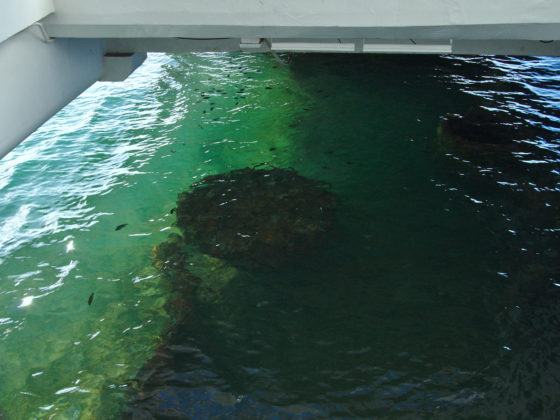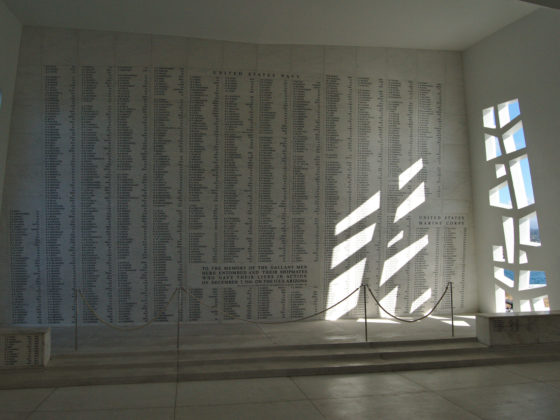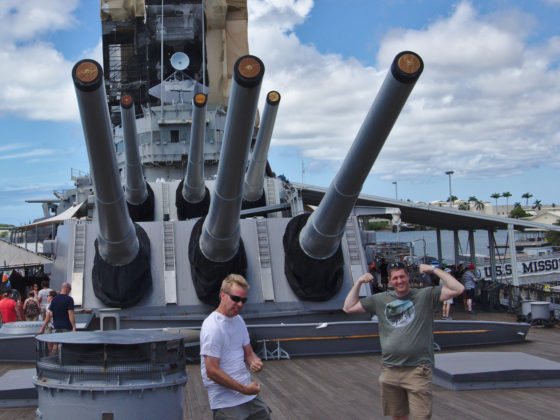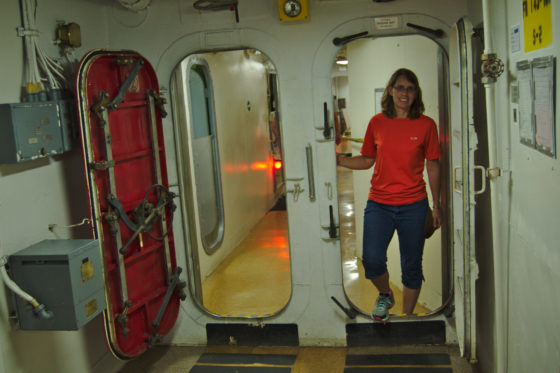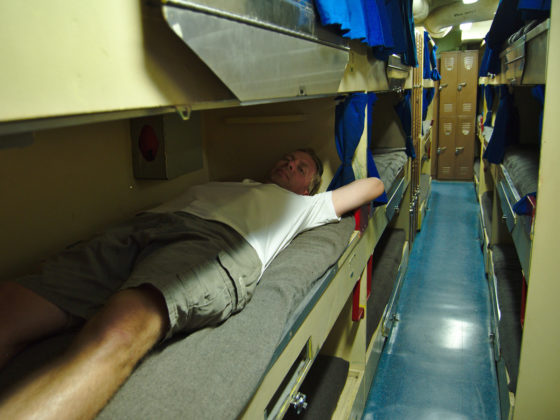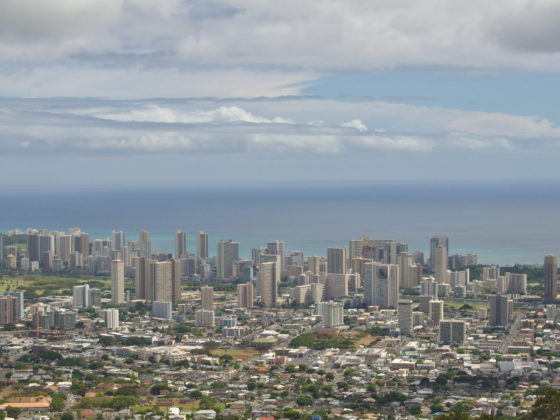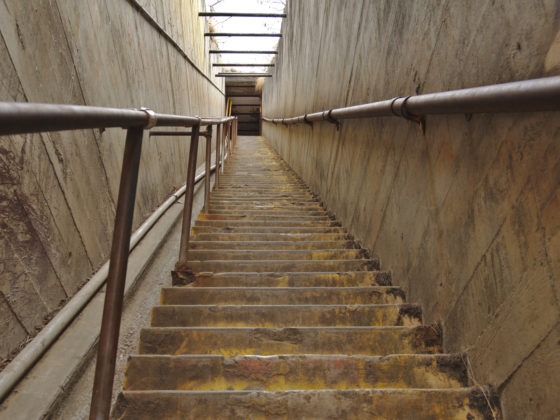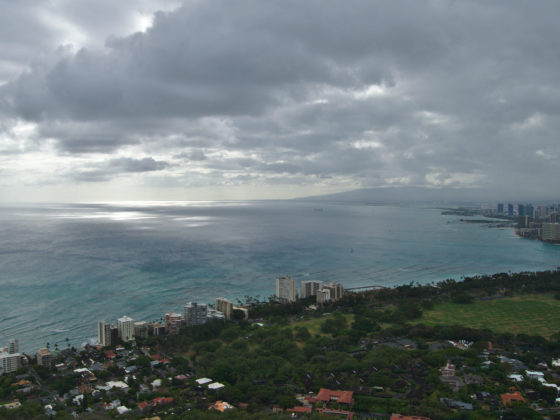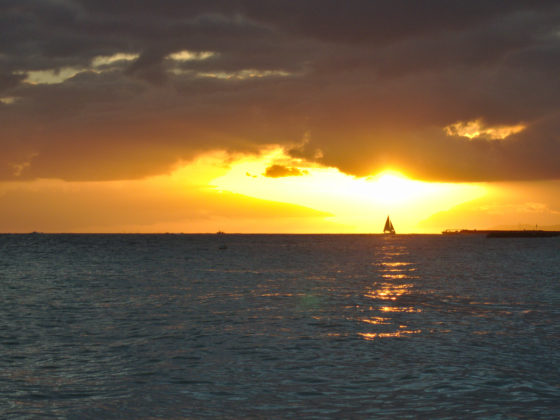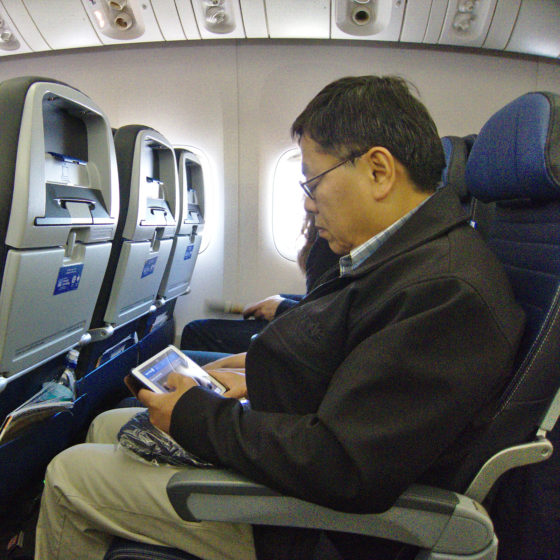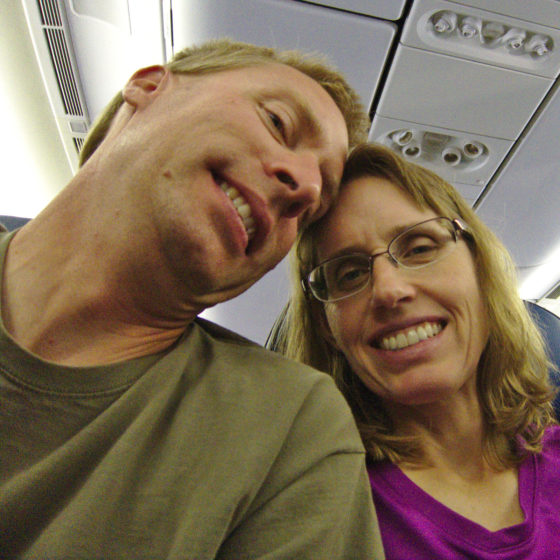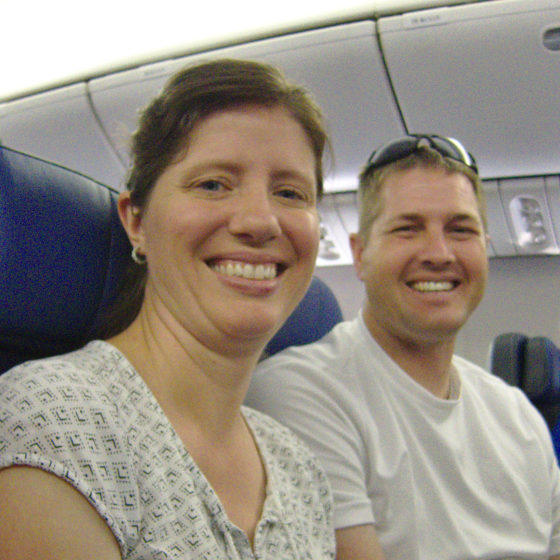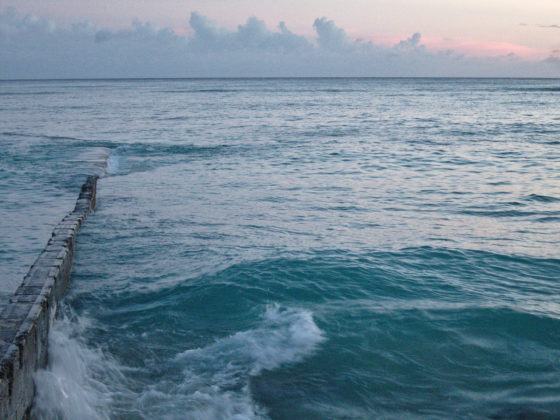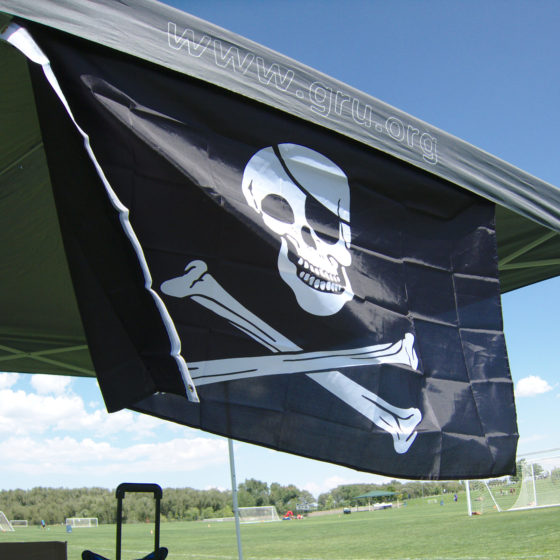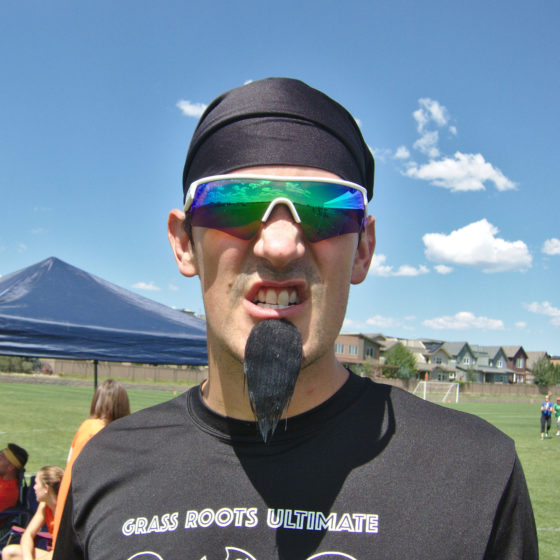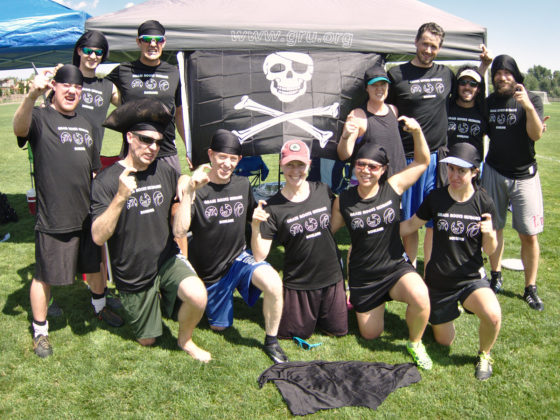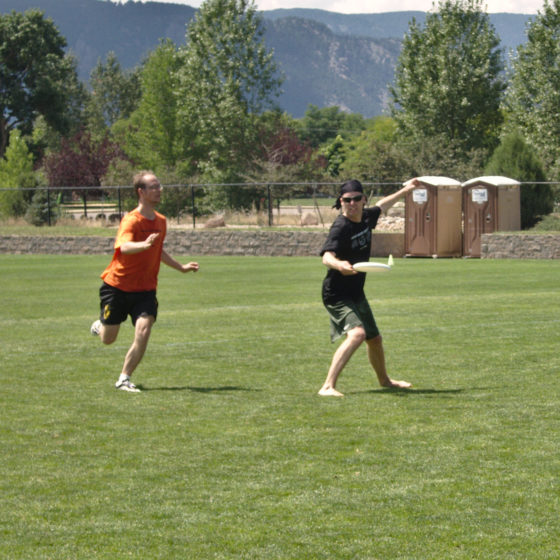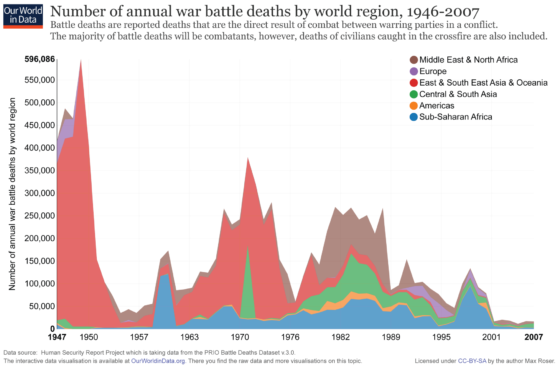Our beachfront hotel in Hana was amazing. It was sort of like a villa with around a dozen rooms, so it was cozy but really nice. Here’s the view from our balcony at sunrise:
The day started out grey and rainy, which isn’t surprising given the amount of rainfall this part of Maui receives. It was a warm rain, and varied between a light drizzle and a downpour. Conditions changed every few minutes, it seemed.
We headed along the road, this time touring the southeast curve of Maui. Like the Road to Hana along the north and northeast coastlines, this “highway” is barely more than a single-lane road with crazy sharp curves and blind corners, including long stretches that aren’t even paved. It’s certainly an adventure driving here!
We stopped at a beautiful waterfall alongside the road, somewhere near Mo’omo’onui Gulch (not a beautiful name).
After a few more quick stops, we found ourselves at Haleakala National Park, where the steady morning rain continued. Laralee and Megan decided to don their ponchos, and they looked quite fetching:
Kurt and I decided to hike in the rain, and within a few minutes the rain stopped, so we had the last laugh. We took a two-mile out-and-back trail to the Falls of Makahiku. The trail was fairly easy, and included a long stretch through a bamboo forest. I found that I just love hiking through bamboo: it’s so tall and dense and green, and in the breeze, the tops of the trees a hundred feet above sway gently while the wood knocks against other trees. The sound is haunting.
Although the rain had stopped, the air was so incredibly humid that everything was just dripping wet. That included my skin. I suspect there’s a point where there’s so much water in the air that sweat isn’t very effective, because the water on your skin simply doesn’t evaporate. I was covered with a sheen of water that was a mixture of sweat and rain. It was a weird sensation– sort of a feeling like you’d never be dry again.
At the end of the two-mile trail, we were rewarded with the most amazing waterfall we’d seen to date. Makahiku is an astounding 400 feet high, pouring over a sheer cliff face that’s teeming with vegetation. I feel like I keep using the word “breathtaking”, but this was… breathtaking. A simple camera can’t really capture the majesty of this scene.
We headed back and went to Ohe’o Gulch, which isn’t a very glamorous name. Apparently many moons ago (before this was a national park), a guy wanted to drum up some business for the area, so he named it the Seven Sacred Pools. In truth, there aren’t seven pools, and there’s nothing sacred about them at all– it’s just a clever marketing ploy. And it worked. The Seven Sacred Pools became legendary, and people traveled along the crazy Maui highways to see them. Unfortunately they were closed due to a rockslide earlier in the year, so we couldn’t swim in the pools, but we could still scramble around the surrounding rocks for some photos.
It’s beautiful, and I can see how it would be a cool experience to lounge in them.
As we continued along the southern highway, the landscape abruptly changed. In the lee of the mountain, there isn’t much moisture, so southern Maui is actually a desolate brown land. All of the moisture– more than 400 inches a year– falls near Hana, and when the clouds blow over the mountains they have no rain left to give. Everywhere you look, the land is peppered with black lava boulders. The difference from the lush green jungle just a few miles away is astounding.
The highway bends north in the middle of the island, and a long climb brought us to the other side of Haleakala. Here, you can go to the top of the mountain and look down into a “crater” that isn’t actually a traditional volcanic crater, but rather the result of erosion of the mountain, which was once much higher than it is now. The mountain is sort of enclosed in a perpetual cloud, and although the road goes above one cloud layer, up at the top it was pouring rain. We couldn’t see any of the incredible views over the vast crater and the faraway beaches.
We drove back down and had some dinner before heading to the airport for our long flight back home. We were all tired after so many packed days, but this was truly the most amazing place I’ve ever been.
Aloha, Hawai’i, until we meet again.



